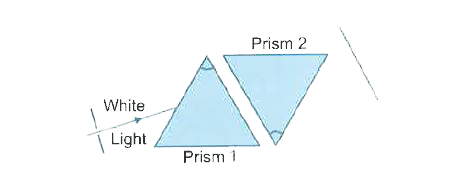When an objects is seen through a calcite crystal, we observe two images. Why ?
The two images are seen on account of the phenomenon of double reffraction by the calcite crystal.
Topper's Solved these Questions
- BOOK - PRADEEPCHAPTER - OPTICSEXERCISE - Very short answer question5videos
OPTICS
- BOOK - PRADEEPCHAPTER - OPTICSEXERCISE - very short answer questions1videos
OPTICS
- BOOK - PRADEEPCHAPTER - MAGNETIC EFFECT OF CURRENT AND MAGNETISMEXERCISE - Competition Focus (Multiple Choice Questions)2videos
MAGNETIC EFFECT OF CURRENT AND MAGNETISM
Similar Questions
Knowledge Check
- Question 1 - Select One
When a beam of light is passed through a colloidal solution and observed under ultramicroscope, we can see _____________.
Ashape of the colloidal particlesBrelative size of the colloidal particlesCfluorescenceDflashes of light - Question 2 - Select One
Schottky defect to crystals is observed when
Aunequal number of cations and anions are missing from the latticeBequal number of cations and anions are missing from the latticeCan ion leaves its normal site and occupies an interstitial siteDdensity of the crystal is increased - Question 3 - Select One
Schottky defect to crystals is observed when
AUnequal number of cations and anions are missing from the lattice.BEqual number of cations and anions are missing from the lattice.CAn ion leaves its normal site and occupies an interstitial site.DDensity of the crystal is increased.
State the relation between colour of scattered light and size of the scattering particle.
(b) The apparent position of an object, when seen through the hot air, fluctuates or wavers. State the basic cause of this observation.
(c) Complete the path of white light when it passes through two identical prisms placed as shown:
 View Solution
View SolutionA point object lies inside a transpatent solid sphere of radius 20cm and of refractive index n=2. When the object is viewed form air through the nearest surface it is seen at a distance 5cm form the surface. Find the apparent distance of object when its seen through the farthest curved surface
View SolutionAn object is seen through a simple microscope of focal length 20 cm. Find the angular magnification produced, if the image is formed at 30 cm from the lens.
View SolutionIt was observed that when the distance between an object and a lens decreases, the size of the image increases. What is the nature of this lens? If you keep on decreasing the distance between the object and the lens, will you still able to obtain the image on the screen? Explain
View SolutionSchottky defect in a crystal is observed when
View Solution

